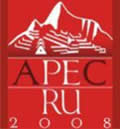United Kingdom
| Welcome |
| Peru in Brief |
| History |
| Geography |
| Government & Politics |
| Maritime delimitation between Peru and Chile |
| News |
Links |
| ECONOMIC PERFORMANCE | ||||||||||||||||||||||||||||||||||||||||||||||||||||||||||||||||||||||||||||||||||||||||||||||||||||||||||||||||||||||||||||||||||||||||||||
|
||||||||||||||||||||||||||||||||||||||||||||||||||||||||||||||||||||||||||||||||||||||||||||||||||||||||||||||||||||||||||||||||||||||||||||
At the beginning of the nineties, the Peruvian economy went through a deep transformation with the arrival of capital flows that allowed a strong economic recovery, especially strong in 1994-1995. The investment/GDP ratio grew from 16.7% in 1990 to 21.2% in 1994. |
||||||||||||||||||||||||||||||||||||||||||||||||||||||||||||||||||||||||||||||||||||||||||||||||||||||||||||||||||||||||||||||||||||||||||||
In 1997 and 1998 crops in Peru were affected by El Nino, with rains that blocked transportation. Fishing, particularly anchovy, was affected as well. The Russian crisis and devaluation in August 1998 had an impact on investment flows and credits. |
||||||||||||||||||||||||||||||||||||||||||||||||||||||||||||||||||||||||||||||||||||||||||||||||||||||||||||||||||||||||||||||||||||||||||||
As a consequence, economic growth was small since 1999 to 2001 and was lead mainly by primary sectors in the economy, particularly mining. Domestic demand was low, stimulated by the public expenditure previous to the election of April 2000, but political uncertainty produced low level of foreign direct investment. In July 2001 the beginning of operations of Antamina –copper and zinc mine – gave a big impulse to mining production, coinciding with political stability attained after the election of president Toledo . GDP grew 4.9% in 2002, with all sectors of the economy showing growth. The reduction of interest rates in the end of 2001 prompted credit demand and improved the performance of manufacture and trade sectors. |
||||||||||||||||||||||||||||||||||||||||||||||||||||||||||||||||||||||||||||||||||||||||||||||||||||||||||||||||||||||||||||||||||||||||||||
In 2003 the economic activity grew 4%. Although mining stayed as the most dynamic sector, growth was more equilibrated that in 2002. Private consumption grew 3.2%. Growth was lead by an increase in private investment of 5.2% and exports growth of 5%. Taxing growth allowed and increase of purchases by the State in 4.5% and investment growth of 3.4%. Private investment strongly grew after the Camisea natural gas project, with US$ 1.6 billion until the arrival of the gas to Lima in August 2004. |
||||||||||||||||||||||||||||||||||||||||||||||||||||||||||||||||||||||||||||||||||||||||||||||||||||||||||||||||||||||||||||||||||||||||||||
The growth of the Peruvian economy has surpassed the rest of Latin America since president Toledo 's government in July 2001, and it is mainly based on mining and exports. |
||||||||||||||||||||||||||||||||||||||||||||||||||||||||||||||||||||||||||||||||||||||||||||||||||||||||||||||||||||||||||||||||||||||||||||
| <BACK> |





